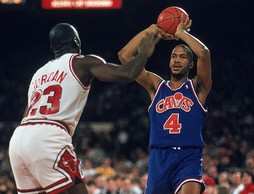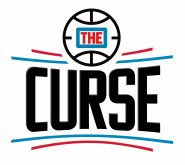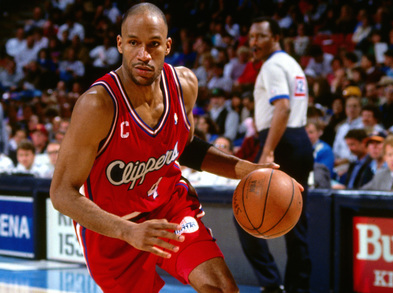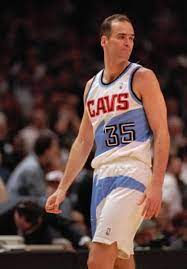How the Greatest Trade in Clipper History was also “the Best Thing” to Ever Happen to Michael Jordan11/16/2016 
Twenty-seven years ago today, Elgin Baylor pulled off arguably the greatest trade in Clipper history, sending Danny Ferry and Reggie Williams to the Cleveland Cavs in exchange for Ron Harper and two first round draft picks. This trade not only propelled the Clippers towards their maiden playoff appearance in 1992, it also played a significant role in Michael Jordan breaking through for his first NBA championship.
By Mick Minas
In the summer of 1989, Cleveland was regarded as one of the NBA’s best young teams, having just completed a season in which they won 57 games, which set a new franchise record for most wins in a season and was also the second highest win tally in the entire league. Unfortunately, this record-breaking season ended abruptly when they were upset in the first round of the playoffs by Michael Jordan and the Chicago Bulls.
However, despite this heartbreaking defeat, all signs were pointing to a long period of sustained success for Cleveland. Their team was built around a three man nucleus of Mark Price, Ron Harper and Brad Daugherty, all of whom were 25 years of age or younger at the time. In fact, their future appeared to be so bright that Magic Johnson, the unquestioned leader of the NBA’s team of the 1980s, proclaimed that the Cavs would be “the team of the 1990s.”
Cleveland general manager Wayne Embry also believed that the Cavs’ roster was good enough to contend for a championship and thus had no plans to make any major trades in the immediate future. Or at least, that was the case until early in the 1989-90 season, when Embry received some concerning news from Horace Balmer, the NBA’s vice president of security. It seemed that Harper, who was averaging 22 points, 7 assists and 6.9 rebounds per game, had been spotted socializing with people who were suspected drug traffickers. Balmer told Embry that Harper’s associates were being actively surveilled by law enforcement and that the DEA wanted to interview Harper in order to gather information on one of his friends. When Harper was confronted with this news, he protested his innocence and even volunteered to take a drug test to remove all suspicion. And while neither Embry nor head coach Lenny Wilkens believed Harper was actually using drugs, this situation still posed a significant dilemma. If, at some point in the future, arrests were made and Harper was involved in some shape or form, the Cavs faced a public relations nightmare. Wilkens and Embry both urged Harper to distance himself from the friends in question and hoped that the problem would go away. It didn’t. A few weeks later, Embry was told that Harper was about to be subpoenaed to appear before a grand jury. Balmer again stressed that this was about the star shooting guard’s associates, rather than anything that Harper had personally done, but this latest development still proved to be the final nail in the coffin. Embry and Wilkens attended a meeting with team owner Gordon Gund to discuss Harper’s future. Embry recommended that they start exploring trade options immediately, while Wilkens tried to convince Gund that they should stick with Harper, as this was a simple case of guilt by association. Wilkens stressed that Harper was showing no signs of any drug usage. Gund’s opinion on the matter was made crystal clear to all in the room when he roared, “I WANT THAT S.O.B. OUT OF HERE!” A few days later, Embry pulled the trigger on a trade with the Clippers, sending Ron Harper and two future first round draft picks to Los Angeles in exchange for forward Danny Ferry and swingman Reggie Williams. Harper was an immediate success in Los Angeles, winning the NBA’s Player of the Week award just two months after he was traded and eventually playing a prominent role in the Clippers first playoff appearance a few years later.
This trade also turned out to be the transaction that effectively put an end to the Cavs’ chances of contending for a championship any time in the near future.
At the time of the deal, Ferry was playing over in Italy, having refused to sign with the Clippers after being drafted with the second overall selection in the 1989 draft. This left Williams as the only immediate addition to Cleveland’s roster and his play was nothing short of abysmal. Williams played 32 games with the Cavs, averaging 6.8 points while shooting just 38% from the field and 22% from three point range. By the end of February, Cleveland’s coaching staff were so dismayed by Williams’ poor play that they waived his rights. Without Harper, the Cavs slumped to a 42-40 record, a 15 game drop from 12 months earlier. At least Williams made some sort of contribution to Cleveland’s 1989-90 season, which is more than can be said for Ferry. At the time of the trade, the Cavs put out a press release that proclaimed, “Boston waited a year for Larry Bird. San Antonio waited two years for David Robinson. You will see- Danny Ferry will be worth the wait.” When Ferry returned to America for the following season, many Cleveland fans wished he had stayed in Rome. Despite the fact that Ferry had yet to play a single minute in an NBA game, he was immediately rewarded with a ten year, $34 million contract. Signing a high draft pick to a long and expensive contract is fine, so long as that player is able to play up to his potential. Unfortunately for the Cavs, Ferry fell well short of even the most humble of expectations. The first signs of trouble came during the 1990 off-season, when Wilkens went out for lunch with Ferry’s coach from Italy, Valerio Bianchini. At some stage during the meal, the discussion turned to Ferry’s chances of having a successful NBA career, and the Italian coach’s opinion almost made Wilkens choke on his sandwich. Bianchini said that he didn’t believe that Ferry was good enough to even make Cleveland’s roster, let alone live up to a $34 million deal. He said that Ferry was not going to be able to play small forward in the NBA and at the power forward position, he would probably be the Cavs’ third best option. Unfortunately for Cleveland, Bianchini was spot on. Ferry lacked the strength necessary to play inside against the league’s premier big men and was not quick enough to defend opposition small forwards. Shackled with a lavish contract that made him practically untradeable, Ferry remained in Cleveland for the first ten years of his NBA career, accumulating the average averages of 7.8 points and 3 rebounds a game.
Many Cleveland basketball fans still point to the Harper-for-Ferry deal as the turning point in the fate of their franchise. Instead of contending for championships, the Cavs spent the next decade watching the Chicago Bulls’ collection of Larry O’Brien trophies steadily increase. Years later Brad Daugherty would reflect on the impact the trade had on his team’s fortunes, saying, “When we traded Ron Harper, that’s what broke our backs. Michael Jordan always said that the best thing that ever happened to him was when we got rid of Ron.”
To read more about Mick Minas' new book The Curse: The Colorful & Chaotic History of the LA Clippers click here. To purchase a copy click here. If you enjoyed reading this blog post, I would really appreciate you sharing it with your friends by clicking on the appropriate icon below:
2 Comments
Ron Harper
11/16/2016 10:10:34 am
I think you owe me some answer ron harper
Reply
Mick
11/16/2016 02:02:26 pm
Ron, Happy to speak with you. I'll try and get in touch in a less public forum, Mick.
Reply
Leave a Reply. |
|
Copyright © 2015


